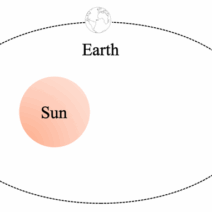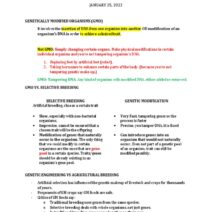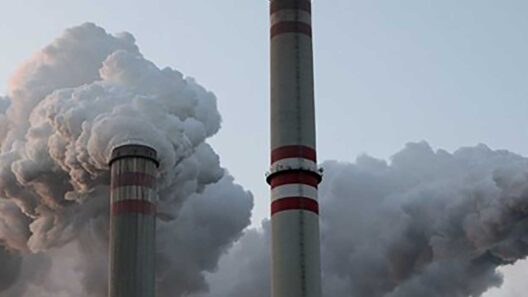Climate change is often described as a looming specter, an insidious force changing the world beneath our feet, in our oceans, and amidst our cities. As we survey this shifting landscape, it becomes essential to understand the multifaceted ways in which climate change affects our environment. This exploration will navigate the profound impacts on forests, oceans, and urban spaces, revealing the intricate tapestry of life and climate interwoven in an ever-evolving dance.
Forests, revered as the lungs of our planet, illustrate the fragility of ecological balance. They are not merely collections of trees but rather vibrant ecosystems thriving with an astonishing array of biodiversity. However, climate change acts as an apocalyptic tension, drawing strings tighter and straining the delicate rhythms of life. As temperatures rise and precipitation patterns shift, the essence of these habitats morphs dramatically. Trees that once flourished in temperate climates now struggle under increasingly inhospitable conditions, facing an onslaught of pests and diseases exacerbated by warmer temps.
The metaphor of the forest as an orchestra highlights this struggle. Each species plays a unique part in the symphony of life; the trees serve as the string section, while fungi and microorganisms form the percussion. As climate change disturbs this orchestra, some instruments fall silent, while others grow disproportionately loud, drowning out the harmonies of the entire ensemble. This imbalance leads to a decline in biodiversity, threatening not only the species themselves but also the myriad services forests provide to humanity, including carbon sequestration and soil stabilization.
Transitioning from the tranquil forests to the expansive oceans, another dimension of climate change emerges. The oceans are an enigmatic expanse, a deep-blue canvas intricately painted with life. However, the impact of rising temperatures and ocean acidification—by-products of greenhouse gas emissions—has begun to unravel the fabric of marine ecosystems. Coral reefs, often dubbed the “rainforests of the sea,” are particularly vulnerable. These vibrant structures rely on symbiotic relationships with zooxanthellae, algae that give them color and sustenance. As waters warm, corals expel these essential companions, leading to mass bleaching events that threaten their survival.
Imagine the oceans as a great theater, where coral reefs act as the stage for a diverse array of performances. Climate change transforms this vivid spectacle into an apocalyptic backdrop, where the once-bright corals fade and the performances become fewer and less dynamic. Fish populations dwindle, altering food webs that have existed for millennia, thereby affecting coastal communities reliant on these resources for their livelihoods. The allure of the ocean is tarnished, with droughts and floods impacting water quality, disruptively introducing pollutants and diminishing the health of marine habitats.
Meanwhile, urban environments are not immune to the caustic embrace of climate change. Cities are intricate ecosystems in their own right—a juxtaposition of concrete and greenery, bustling with human activity. However, as heat waves intensify and precipitation becomes increasingly erratic, urban areas face mounting challenges. The urban heat island effect exacerbates rising temperatures, with asphalt and concrete absorbing sun’s energy and releasing it long after twilight. This phenomenon creates islands of heat that can be detrimental to the health of city dwellers, particularly vulnerable populations.
Furthermore, climate change precipitates a cascade of events that can lead to catastrophic flooding. Infrastructure designed for historical weather patterns is often woefully inadequate against unprecedented rainfall. As storm surges inundate streets and buildings, one can invoke an image of the city as a dam, holding back a torrent of water but slowly crumbling under the strain. This anthropogenic vulnerability not only endangers lives but strains economic systems poised to respond to these disasters.
As we consider the interdependencies between forests, oceans, and cities, it becomes glimmeringly clear that climate change weaves a complex narrative that impacts each entity differently yet fundamentally. The health of forests informs the state of oceans, as runoff and pollution from land can have dire consequences for marine ecosystems. Similarly, urbanization can encroach on vital forested and coastal areas, further compromising their integrity. This interconnectedness speaks to an ecological truth: we are all tethered to these environments. A disruption to one can reverberate across the complex web of life that sustains us.
To combat these impending threats, we must embrace holistic and innovative approaches, fostering resilience across ecological and urban landscapes. Reforestation projects can reinvigorate forest ecosystems, while marine protected areas can safeguard fragile ocean habitats from overexploitation. Urban planners must prioritize green infrastructure, integrating nature into the very fabric of cities, thus creating a buffer against environmental challenges.
In conclusion, climate change affects the environment’s rich tapestry in profound and extensive ways. Forests, oceans, and cities stand as testaments to the intricate interactions of our world—a world that is increasingly vulnerable to the whims of climate change. As stewards of this planet, it is imperative to acknowledge these impacts and collectively seek sustainable solutions. Only by recognizing the intrinsic connections between these ecosystems can we hope to nurture and restore the delicate equilibrium that sustains them—and us—moving forward.





